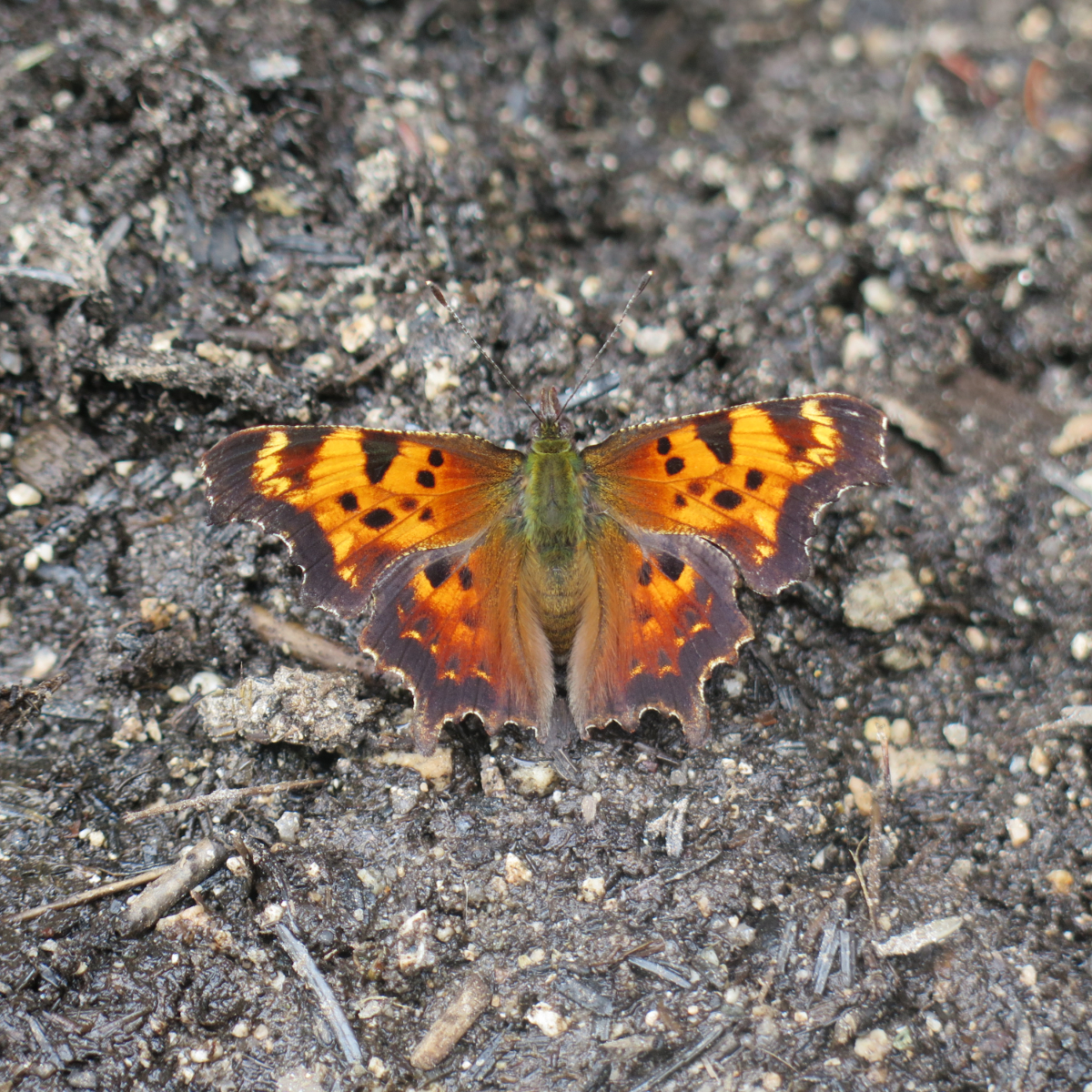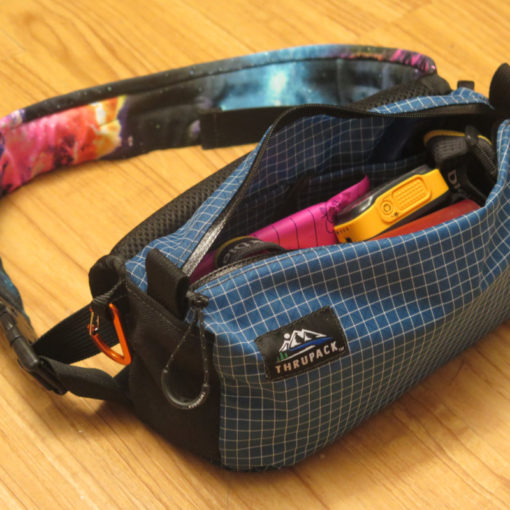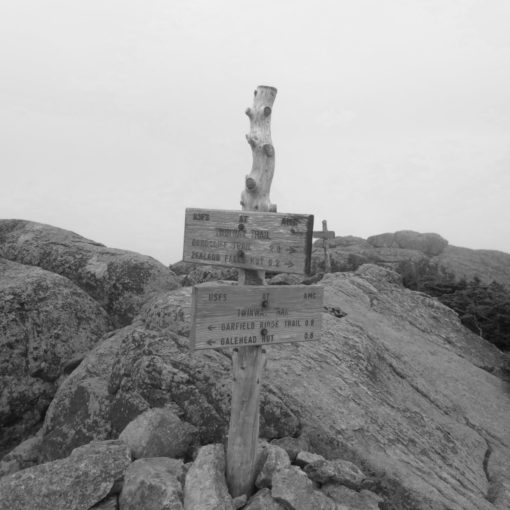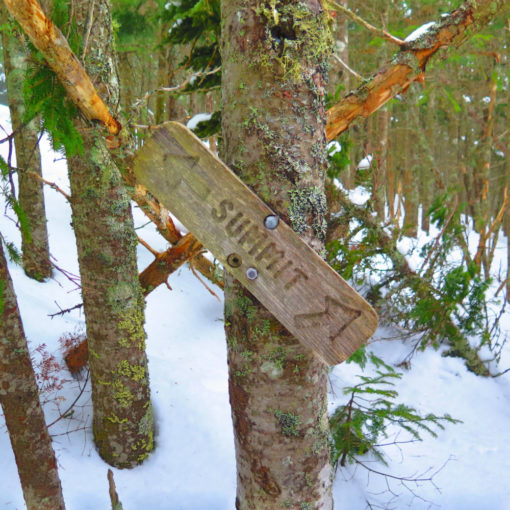Perhaps like many of you, my readers, I’ve been following the news regarding the lost hiker in Franconia Notch. The short of it is that a 19 year old woman was trying to nail down the last few peaks on her 48 list before her upcoming 20th birthday. Sunday, she didn’t show up as expected at the trailhead where her mom had dropped her off that morning. Unfortunately, the ending wasn’t happy. Her body was recovered on Wednesday from an area near the headwaters of Lafayette Brook, to the northwest of the summit of Lafayette.
All this implores me to remind you: please, don’t get lost. While I do indeed think it’s OK to get “good” lost in the woods, at all times, your one and only destination shall be your safe return to the trailhead, regardless of whether you’re hiking a loop or a one-way traverse.
News sources near and far covered the story. One quote really caught my eye:
“The biggest lessons learned in a tragedy like this is when you’re hiking in New Hampshire, especially in the White Mountains, be prepared for the unexpected,” said Fish and Game Maj. David Walsh. “Be prepared with knowledge. Know the weather conditions. Dress for the weather conditions. Have extra clothes. Have extra food, water. Have a headlamp, map, a compass.”
https://www.wmur.com/article/lost-hiker-body-found-franconia-notch-112322/42052999
I really don’t like pointing the finger of blame at the dead. However, so her death might not have been in vain, it’s worth examining what went wrong. Note that I wasn’t there (of course) and I know only what was reported. I’ll update as I find out more. But it was pretty explicitly noted in the news that she was inadequately prepared. As I followed the story, day after day, I noticed that just about everything that the F&G Major cited as being essential gear was not carried by that hiker. She went up improperly dressed, wearing sneakers, not boots. No headlamp. No extra clothing. No means to create fire. No shelter or sleeping bag. I read somewhere that her water was in a Camelbak, which likely froze solid within a couple hours. She did take some sort of survival course, but it was geared toward summer hiking. Maybe the worst of all is that she had little to no winter hiking experience. Unfortunately, the conditions she experienced now, in the middle of autumn, were entirely indistinguishable from those you might find on any day in the middle of winter.
Something that will color this discussion will include my experience meeting scores of under-prepared hikers, and others who’ve made indications that they’re making poor decisions while hiking. I see this kind of thing happen a disturbing number of times.
First: If you’re in a bind, and it’s been some amount of time since you left the trailhead, it’s going to be that amount of time for rescuers to get to you, but before that can happen, they’re going to have to get your distress call, muster at the trailhead, create and communicate a plan, and then start moving toward you. You’re three hours in? Expect it’s going to be at least four+ hours for help to get to your side. When seconds count, help is hours away, so self sufficiency is key in the mountains. Moving on…
Humans are terrible at gauging risk. A lot of it rests on “that which didn’t kill me last time” but that argument disregards the role of luck, and sometimes that luck masquerades as skill. And so confounding this ill-fated trip was the fact that she had a few peaks left on her four thousand footer list, and her 20th birthday was this week. That’s a toxic combination when you have to gauge risk and your life is on the line. With that trip, she’d have nailed four peaks — a rather nice haul. But the weather was sour. Summit fever can be a great motivator, but it can also be a deadly one. I wrote two essays that are worth reading: one on Mental Factors, and the other on Risk Management.
When I finished the NE 67 list, I did so on Katahdin, and by the time I summited, the winds were howling, it was heavily misting, and in general, the conditions were “a bit rough.” Every few minutes, I kept asking myself if I needed to continue, or if I needed to bail. Obviously, it was a long drive to Baxter, so there was that on the line. But I felt well prepared, and while the weather was garbage, it was a fairly warm day (65 at the trailhead, mid-50s up top.) I was appropriately dressed, still feeling warm enough to continue. I may have been battling a gale force wind, but I wasn’t cold. More importantly, I was prepared to turn around at a moment’s notice, and that question was addressed many times over the span of the hour that it was relevant.
Similarly, one year to the day after I broke my ankle on Adams, I wanted to hike Madison. It felt right, and a way to “close the circle” on that fateful day. On the summit, the winds were howling. It was the end of December, so it wasn’t warm in the slightest. But my advantage was that the summit cone did a decent job of sheltering me from the worst of the wind, so I was only fully exposed to its full force for the last few minutes of the summit push. And moments after topping out, I was racing back down. Not long after, I was well away from the worst of the wind. That whole time, I was constantly assessing risk, and my gear and clothing preparations were on-point. I came “loaded for bear” and that’s part of what drove my success.
My suspicion is that being under dressed, the 30-40 MPH winds and zero degree (after windchill) temps on Sunday dropped her body’s core temperature quickly. When hypothermia sets in, your brain gets addled, and you make really crummy decisions. Then you suffer the consequences. You get colder, you make worse decisions, and things rapidly spiral downward. She was a sophomore at a prestigious college, working toward some kind of biology degree. In normal conditions, she was probably quite smart, but the mountains are dispassionate. It’s thought she lost the trail, leading to her peril.
Side note: it’s might be tempting to sip some booze to counter hypothermia. This is a fallacy. First off, no-one makes good choices once they’ve hit the sauce. You’re in lousy weather, miles from the trailhead, things are getting tough, and you’re going to add alcohol intoxication to your grab-bag of troubles? But also, booze may make you think you’re feeling warm, but it shunts blood (and hence, warmth) away from your core, out to your extremities, where it promptly radiates away on the wind. Save the drinks for after you’re safe, and sharing your “so there I was…” stories with friends.
One thing I noticed is that the headwaters of Lafayette Brook are at about 4,000 feet. If she’d descended along the brook, within about an hour, she’d have been well within the trees and out of the wind. But better still, she’d have been within a few hundred feet of Eagle Pass, at about 3,000 feet. A turn to the left (heading southwest) and she’d have been on the bottom half of the Greenleaf Trail in short order. An hour or so later, she’d have been at the Cannon Mountain tramway. This would have required some amount of decision making, as well as navigation skills, and the ability to use a map and compass.
If she was still in good shape, this would have been a decent option, but if the weather had already banged her up, an unlikely one. Any degree of hypothermia would have made that a tall order. This makes it all the more important to stay ahead of the game at all times, and bail out early if the weather is sour. Usually bad goes to worse long before it gets better. If you turn around, and an hour later, things do get better, you can always decide to head back up if there’s enough time left in the day, or just cut your losses by visiting some attraction on the way home that’s quick and easy to get to.
A lack of food didn’t cause her peril in and of itself. But it didn’t do anything to reverse her problems. When you’re cold, you start to shiver. This is your body trying to burn calories to create heat. But that can only work if you have calories to burn. You need to stoke the boiler. This is why it’s absolutely essential to bring lots of food in cold weather. When you’re not moving, you’re losing heat. Fats are 9 calories per gram, and it’s a long and slow burn. Carbs are 4 calories per gram, and they give you a quick burst of short-term energy. A balance of the two will get you going quickly, and keep you going for awhile. A combination of granola bars (grains and dried fruits) with some nuts and seeds (higher in fats) will do you well in winter. Putting some electrolyte powders in your water, and carrying it in an insulated carrier or a vacuum bottle will help keep it from freezing solid. A stove will give you the ability to make more water from snow. (Eating snow will cool you from within, bringing about hypothermia. Bad news!)
Shelter doesn’t have to be a fancy tent. Bringing a tarp and a couple emergency bivy bags (available at outfitters everywhere) can do in a pinch, while remaining fairly lightweight. A lightweight foam pad or air mattress will keep your body from direct contact with the ground, and help you lose heat more slowly. Similarly, if you can make a bed of tree branches, that’ll help retain your warmth.
Folks, hike safe. Bring adequate food, water, and supplies. Keep your goal for the day “your safe return to the trailhead.” Mind what time it is, and when the sun sets. (Pro Tip: around December-January, it’s around 4:30 in the afternoon; the day is of about 9 hours long for those months.) In the summer, but especially in the winter, a headlamp should be a permanent part of your kit. And educate yourself. If nothing else, study the map of the area you intend to visit, so you can create options on the fly. Know that if you follow water downward, you’ll eventually get off the mountain, but know which way to go down, so you’ll hit a road at the bottom, and not, for example, the Lincoln Brook Trail (between Lincoln and Owl’s Head) many miles away from any trailhead.
Recommended reading:
AMC White Mountain Guide (most recent edition.)
Mount Washington Higher Summits Forecast: https://www.mountwashington.org/experience-the-weather/higher-summit-forecast.aspx
New England Trail Conditions: https://newenglandtrailconditions.com
Note, this is not, nor is it intended to be, a comprehensive list. I encourage you to continue studying; consider joining local trail associations, the AMC, the American Alpine Club, and other similar organizations, to help you learn more.
As always, stay safe out there.





13 thoughts on “PSA: Don’t get lost!”
Excellent article.
Thanks! I hope eventually that things like this won’t need to be written.
Well said!!
Thanks! Very appreciated.
A very nice summary of the unfortunate events and ways to be prepared.
Two points that I really don’t have an answer to.
1) Should someone hike alone especially in winter like conditions above tree line. I have taken the NH AMC chapter winter hiking series and they emphasize that at least 4 persons should go on these hikes. One to stay with the “injured” and two to get help if needed.
I myself have hiked alone in winter conditions but I am fully prepared to spend the night out if something should go wrong. That being said should I fall and have a substantial head injury, having all the extra equipment will not help should I be rendered unconscious. At times if the weather is forecast to be good I may take that risk and hike alone.
2) Did she carry an emergency beacon like a “Spot” or similar device to activate should life threatening issues arise to get help. However as we know being on the Franconia Ridge it possibly could have taken an extended period of time especially with poor weather to reach someone. Potential rescuers should not risk their own lives to save someone else. One has to be prepared to spend the night in potentially brutal conditions.
Wow. I had to think about this for awhile.
So on point one, I have no clear guidance. I myself solo hike almost exclusively. In a year, there *might* be a hike or two where I have a pre-arranged companion. There’s some risk of death, obviously, with that. So far, I still number amongst the living.
The AMC has a point with their “strength in numbers” strategy, but it depends on there being at least two or three competent trampers in the party.
I think the biggest factor is whether everyone in the party knows what they’re doing. That goes for a group of ten as well as it does the solo hiker. A group of untrained, inexperienced trampers can get themselves just as much in trouble as a solo hiker. For example…
Last winter, I saw a group of five stumbling and bumbling their way up Liberty. I lapped them easily (despite my going all the way out to Flume) before they were even halfway up Liberty. On my way down, I told them their trip was up. Sunset was in a couple hours, and they had no flashlights, no sleeping bags, no shelter among them. Thankfully, they followed my advice: I saw no mention of them in the news the next day.
While the AMC guideline is useful for competent hikers, it would have done nothing for these folks. It was a group of more than four people, but I wouldn’t trust they’d have been able to handle any emergency with even a passable level of competence.
A confounding variable is the trail. If you’re hiking on a Saturday, and you’re on a well-traveled route in clement weather, you’re rarely alone for more than half an hour most days. The inverse is also true. If those five had decided the Dry River Trail on Isolation was a good idea, I can only imagine it would have been springtime before someone found their remains.
Like you, I don’t have a good answer to this question. I think it comes down to your level of skill and training, your gear choices, your trail choices, and your acceptance of risk.
I will always advocate for a risk-averse strategy, only because it maximizes your chances for living long enough to revisit the trail you turned back from, when the conditions are more favorable.
On your second point, I don’t know if she had a SPOT device, PLB, or similar. That the news never mentioned one, or that F&G was following a homing signal (and the fact that it took three days to find her) suggests she didn’t carry one. But yes, when seconds count, help is hours (or days) away, and self sufficiency is a must.
There’s been a lot of talk about this on the Hiking the 4000 Footers Facebook group. A rescuer was quoted as saying her food and water were found at the summit of Lafayette, so evidently she bailed on crossing the ridge, but lost the trail on the way down. She was found by Lafayette Brook at about 3200′ elevation, so she almost made it to the Greenleaf Trail, but the rescuer said the snow was thick and deep and hard to move in, and “she must have fought like hell to get out of there”. Of course, we don’t know if she knew to make for Eagle Pass or if she was just following the brook, which would have been a long bushwhack down.
I’m glad you’re on the book of the Face, because you know I’m not. If you hear more about this, feel free to PM me via my email.
Not only is this a great article, but I am touched at your sensitivity and respect shining through every paragraph. We can all learn something from this tragedy, yet do so without making things even more painful for her loved ones, should they ever read this. Good job!
The cool thing about being nice to people is that it’s returned to you in spades. The mountains are utterly dispassionate to us, but part of what makes the trail great is all the people you meet. Miles of smiles, even on rainy days.
I’m sure Emily would have been an interesting person to have hiked with, having been a biology major at Vanderbilt. But in the aftermath of her tragedy, I think it’s essential that we fold her lessons into our own armamentariums. Knowledge is power. The worst blow against her legacy is that something preventable like this happens again.
Tragic and preventable. Our family hiked with the mindset of “The mountains will always be there.” The unsaid part of which assumed you will be there to hike another day only if you’re smart about it!
Personally I don’t understand the need to check off hiking lists, I prefer to savor the few days in the mountains I can get without the peer pressure of the arbitrary goals we’ve created to push hiking beyond the simple enjoyment of being out in nature. It appears that this young person’s ambition to complete a list not only cost a life but put rescuers at risk.
Another worthwhile read for those interested in learning from the mistakes of others in the Whites is this book: https://a.co/d/7S6zlRR
I too enjoyed “Not Without Peril”. It’s a good, sobering read. At some point, I’ll make another post about books, but I think this made the cut of my last one.
On lists… I’m in the middle of a few. For me, it’s a framework to keep my explorations organized, but it’s also a goal and a motivation to make the hundred-plus mile drive every week. But it’s also the camaraderie. Even if I don’t actually meet everyone who’s done the grid, when you meet someone on the trail and they say “I’m finishing up October”, it’s a touchstone for conversation, and a way to connect on another level. A way to say “yeah, I’m one of those oddballs, too.” But your point that unchecked, it can put people into harm’s way, is a very valid point. A list is just a sheet of paper.
And yes, the mountains have been there in current form for 12,000 years (since the last ice age.) That they’ll be there next week is almost a given.